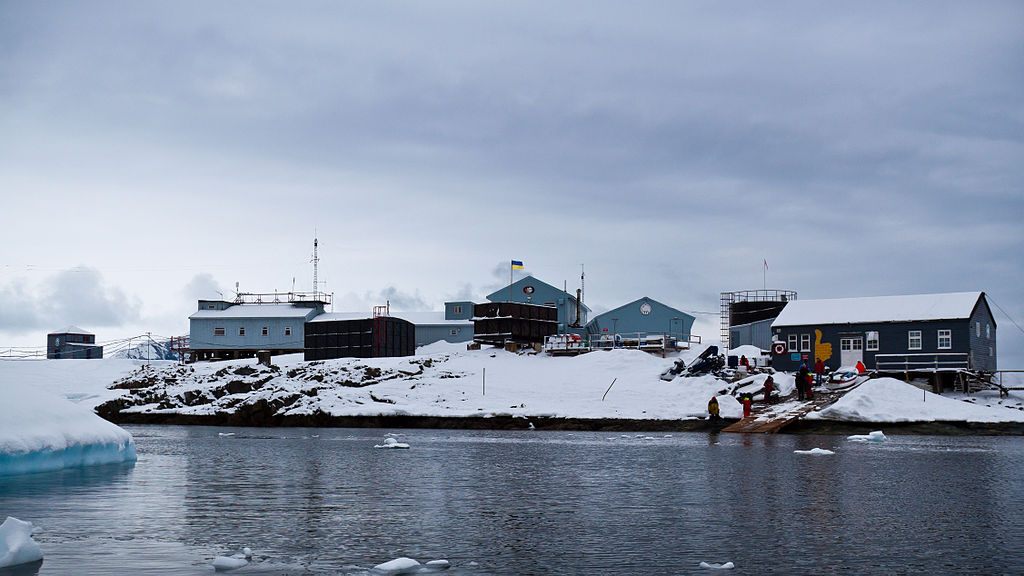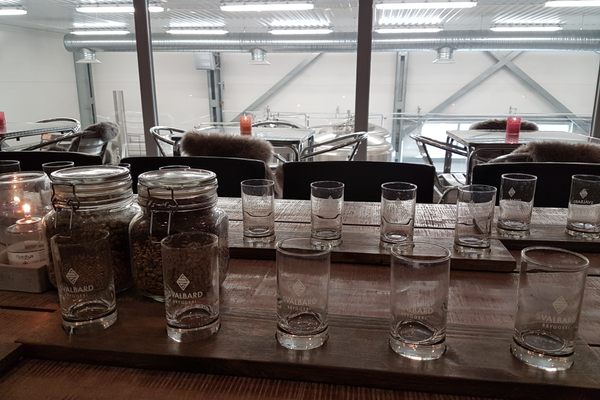The Restaurants at the End of the World
Some chefs seek adventure on distant islands and within far-flung forests.
THIS ARTICLE IS ADAPTED FROM THE MARCH 25, 2023, EDITION OF GASTRO OBSCURA’S FAVORITE THINGS NEWSLETTER. YOU CAN SIGN UP HERE.
How far would you go for a special meal?
Here at Gastro Obscura, we’d go pretty far. In fact, we have a whole list of restaurants that require an adventure to reach: crossing a tidal flat at low tide, for example, or lacing up your hiking boots to trek up a mountain.
Some of these remote restaurants are a glitzy experience, where their existence depends on cash-flush diners hungry not so much for food, but for an experience like no other. Take the Ithaa Undersea Restaurant, for example. Getting there requires taking a seaplane or speedboat to an island in the Maldives, then walking down a jetty and descending into a tunnel that leads to a restaurant 16 feet below sea level. Diners are rewarded with fancy seafood and a view of the surrounding coral reef.
Tan Hill Inn, on the other hand, is 1,732 feet above sea level. Britain’s “highest” pub was constructed 400 years ago, to serve a coal-mining community that no longer exists. But it stays busy as a stop for cyclists and hikers eager for sandwiches or a Sunday roast after exploring the Yorkshire Dales.

Some of these places don’t offer food, but more simple refreshments. The bar at Vernadsky Research Base may not have dishes, but it does offer visitors to the South Pole vodka distilled on-site. My own bucket list includes a future trip to Huashan Mountain, where a perilous pilgrimage to the top of one of China’s most sacred peaks leads to a cup of tea at a Taoist temple.
I’m not the only one fascinated by these distant places to dine. I recently chatted with Kristen Kish—Top Chef winner, Iron Chef co-host, and the chef at Arlo Grey in Austin—about her new show, which premiered this week on the National Geographic channel. Restaurants at the End of the World lives up to its name, with Kish criss-crossing the earth to visit everywhere from a restaurant in Panama’s cloud forest to an Arctic eatery located on a Norwegian archipelago.
Watching Kish gamely help restaurateurs prepare haute cuisine in harsh conditions and for diners that arrive in everything from heels to hiking boots, made me wonder what unique challenges and benefits there are to setting up shop in the wilderness.
As it turns out, many chefs are compelled by their sense of adventure to undertake this unique challenge, just as much as diners are thrilled by the opportunity to sample fine dining after exploring glaciers and forests.
The following interview has been edited and condensed for clarity.

Q&A With Kristen Kish
During filming, which was the hardest restaurant to visit?
Isfjord Radio in Svalbard. It was, gosh, three flights, a couple of small [car] rides, and then a boat, and then another boat. It was by far, even just on the map, the most remote place that we went to.
What do you think makes chefs set up restaurants in such far-flung locations? You’re not exactly going to get a lot of walk-ins.
The beauty of all the places that we went to was that none of them felt like a “traditional” restaurant. Each person either told me—or I gathered from hearing their story—that it was done for specific reasons that were very personal to them.
Whether it was to provide a life that they felt was better for their family, or [chefs] that had gone through a personal roadblock and refocused their attention on what they wanted. And some of them were just, quite frankly, looking for this thing that was far out there, right? To feel the adventure.
Did you see a similarity between all the chefs that you met?
I envied their characteristic trait of relinquishing control over everything. Because you’re working with an environment that you have no control over. They all have this sense of “what will be will be, and everything will be okay.”

What kind of eaters and travelers seek out these restaurants?
People that are just looking for something different and new. Like, no matter how many restaurants we go to with different kinds of food, it’s a restaurant, right? We go in, we order off a menu, we sit there, multiple courses are brought, and you pay the check and you go. This really is a journey that starts long before you even get to the restaurant.
Some probably are looking for adventure, and then food is just a nice perk, and some people are going specifically for the food. When I was with [chef Rogier Jansen] at Isfjord Radio, I was like, these guests are the dream guests. They were just, “Whatever, let’s just try it. And if we don’t like it, that’s also okay.”
So it was really nice to not only be surrounded by these people who are incredibly passionate about what they do in their restaurant, but also these diners that are game for everything.
Do you think you’ll ever set up shop at the end of the world and cook?
It’s really hard to not be infected by that enthusiasm and want that for yourself, and see the charm and the appeal of why they’re doing what they’re doing. As much as I would like to think that I could do it, I don’t know if it’s for me. [But] I will happily visit any of the restaurants at the end of the world.
Gastro Obscura covers the world’s most wondrous food and drink.
Sign up for our email, delivered twice a week.


























Follow us on Twitter to get the latest on the world's hidden wonders.
Like us on Facebook to get the latest on the world's hidden wonders.
Follow us on Twitter Like us on Facebook